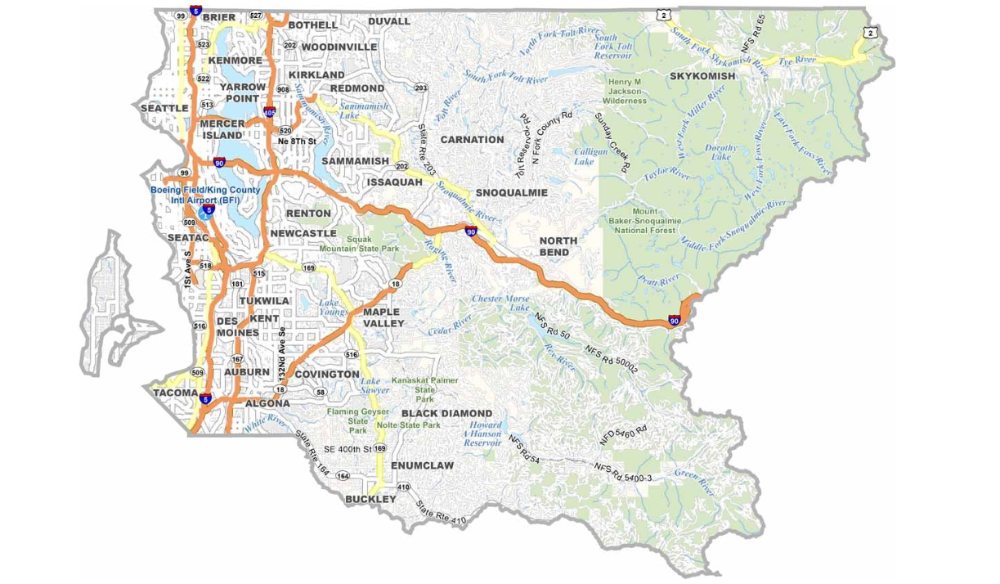Shortly after the recent election, an editor at Post Alley asked if I’d be willing to draw on my experience as deputy county executive to share any advice for Girmay Zahilay, the newly elected county executive. I must admit, recognizing the 2025 election’s generational shift — out with the Boomers who created this mess and in with Millennials and Gen Z — caused me to ponder what useful advice could an old Boomer like me provide? But I took the bait.
First: Enjoy the ride. Despite all the challenges, King County is an amazing government filled with committed public servants doing extraordinarily important work in a region with great assets. Our large, diverse, and growing population tops 2.4 million and ranks us us bigger than 16 states. Our economy tops $389 billion, largest in Washington state and the Northwest, and exceeds those of more than 29 states.
So we have a lot to work with. Unfortunately, in addition to all those people and economic activity, King County also contains more governments than any reasonable person would expect — more than 140! The surfeit consists of federal and state agencies, a Port, 39 cities, 19 school districts, a library district, Metro Transit, two airport districts, water and sewer districts, a noxious weed district, and cemetery districts. Each has a tax base, a mission, and an elected or appointed board. Ideally these boards steward their public tax dollars. At their worst, these agencies steward their public tax dollars without regard to the other 140 public agencies. It’s a dis-integrated mess.
Working markets advantage business, who provide accountability to both business
and customers. This gives business organizations a powerful incentive for an organization that wants to survive, but markets only work for about half of our economy. Some technologies encourage monopolization (utilities for example); in other cases, communities decide to provide services for various un-harmonized reasons.
This situation has encouraged the large number of governments we have in King County. The downsides are: separated silos with over-generous or inadequate tax bases; multiple duplicative functions; lack of flexibility to use resources effectively and efficiently; or to encourage the various governments to collaborate.
Then there are the competing outcomes. What are we trying to achieve? Lower crime?
Reduced homelessness? Serviceable roads? Educated kids? These are all outcomes we
can and do measure. What we don’t do well is to articulate the strategies and services, the cost and attributes of the services needed to improve the outcomes.
I used to say that we spend to show we care. Businesses do that by measuring the costs of what they deliver and the value the customer places on it. During my time at King County, we partnered with a national collaborative developing techniques to measure these things. An early pilot using one of their techniques looked at the cost of paying invoices. We found it cost, on average, $27 to pay an invoice but more interestingly it cost $15 to pay electronically and $17 to pay manually (factoring in mistakes).
When we investigated the reasons for these mistakes, we found lack of training to be the
missing link, so we implemented a training program and reported errors each of our departments. Over a few months we reduced the error rates by 90%. It worked in the private sector; it can work in the public sector.
The King County Executive owns a bully pulpit in one of the richest and largest
jurisdictions in the United States. County Executive-elect Zahilay touted his ability during the campaign for building coalitions and partnering. The opportunity exists to use that skill to define outcomes we wish to achieve as a region. The county has people who’ve been working to adapt the techniques to the public sector and can apply them across governments to begin to integrate public sector processes to deliver results.
Let’s take the example of resolving homelessness. The new executive has the platform to create that coalition and the county has the proficiency to manage and measure its success — and hold the various governments accountable for costs and quality of delivered services. Doing so would begin a 21st-century reform of the public sector replicating the 20th-century’s progressive reforms.
We Boomers reaped the rewards of that reform effort; Gen Z’s kids should reap the rewards of this one.
Go for it!
Discover more from Post Alley
Subscribe to get the latest posts sent to your email.
